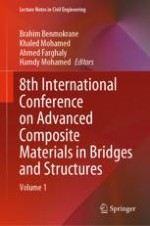This book comprises the proceedings of the 8th International Conference on Advanced Composite Materials in Bridges and Structures (ACMBS) 2021. The contents of this volume focus on recent technological advances in the field of material behavior, seismic performance, fire resistance, structural health monitoring, sustainability, rehabilitation of structures, etc. The contents cover latest advances especially in applications in reinforced concrete, wood, masonry and steel structures, field application, bond development and splice length of FRB bars, structural shapes and fully composite bars, etc. This volume will prove a valuable resource for those in academia and industry.
